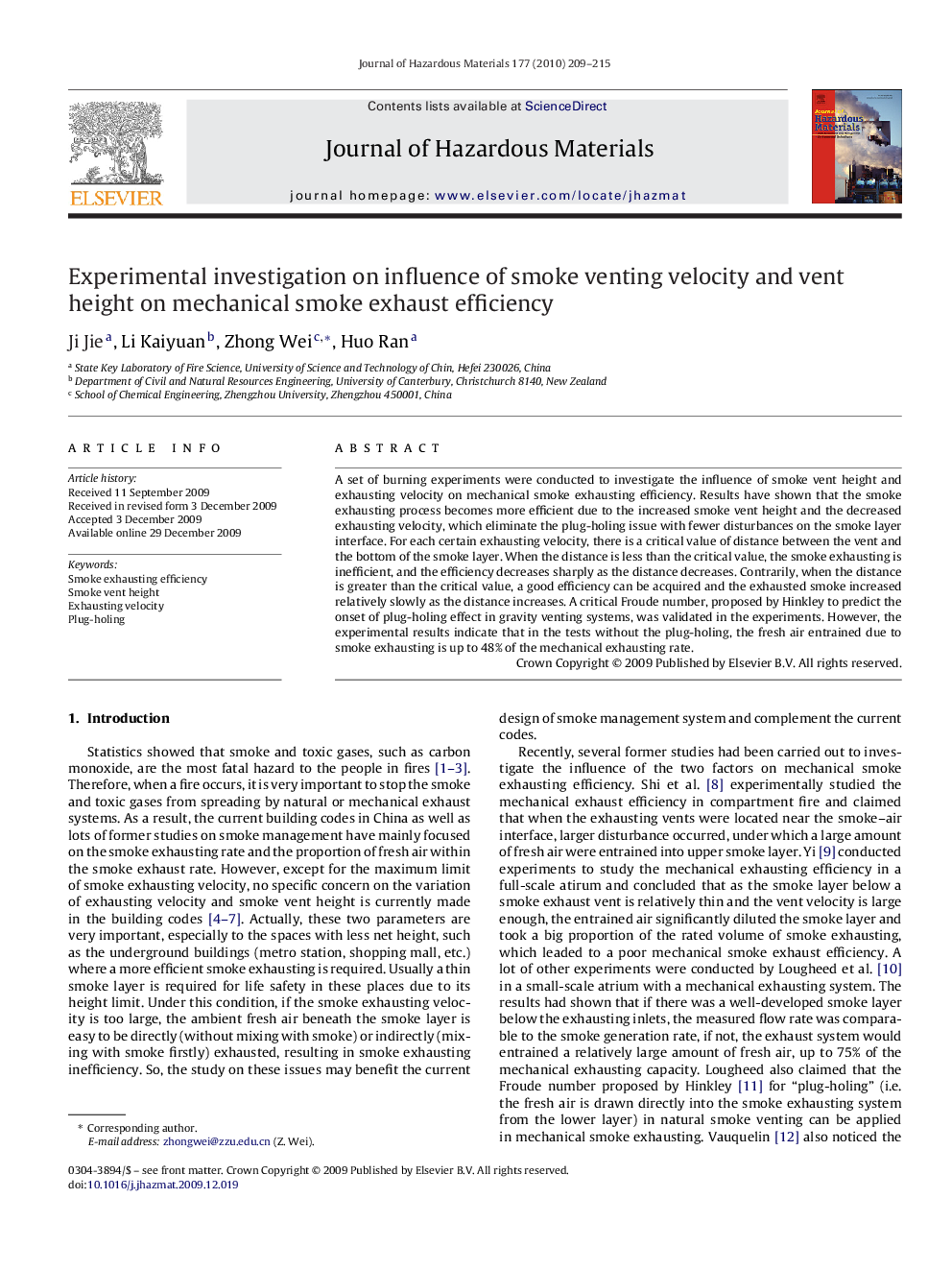| Article ID | Journal | Published Year | Pages | File Type |
|---|---|---|---|---|
| 580851 | Journal of Hazardous Materials | 2010 | 7 Pages |
Abstract
A set of burning experiments were conducted to investigate the influence of smoke vent height and exhausting velocity on mechanical smoke exhausting efficiency. Results have shown that the smoke exhausting process becomes more efficient due to the increased smoke vent height and the decreased exhausting velocity, which eliminate the plug-holing issue with fewer disturbances on the smoke layer interface. For each certain exhausting velocity, there is a critical value of distance between the vent and the bottom of the smoke layer. When the distance is less than the critical value, the smoke exhausting is inefficient, and the efficiency decreases sharply as the distance decreases. Contrarily, when the distance is greater than the critical value, a good efficiency can be acquired and the exhausted smoke increased relatively slowly as the distance increases. A critical Froude number, proposed by Hinkley to predict the onset of plug-holing effect in gravity venting systems, was validated in the experiments. However, the experimental results indicate that in the tests without the plug-holing, the fresh air entrained due to smoke exhausting is up to 48% of the mechanical exhausting rate.
Keywords
Related Topics
Physical Sciences and Engineering
Chemical Engineering
Chemical Health and Safety
Authors
Ji Jie, Li Kaiyuan, Zhong Wei, Huo Ran,
